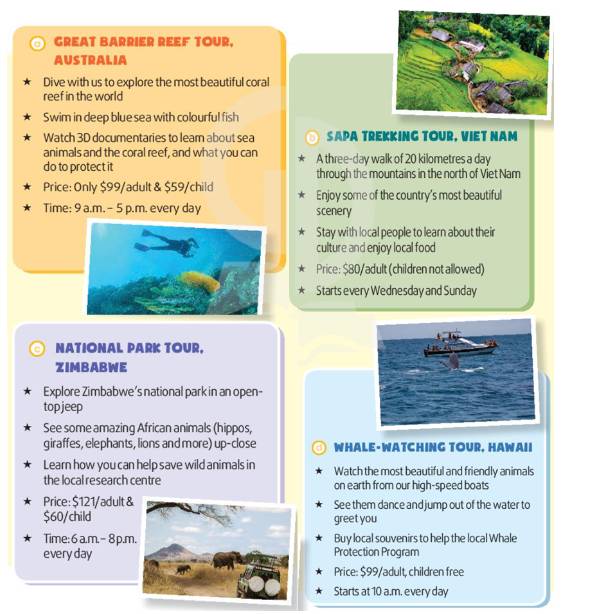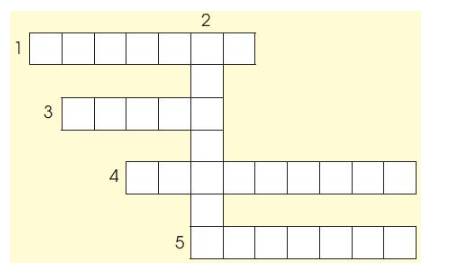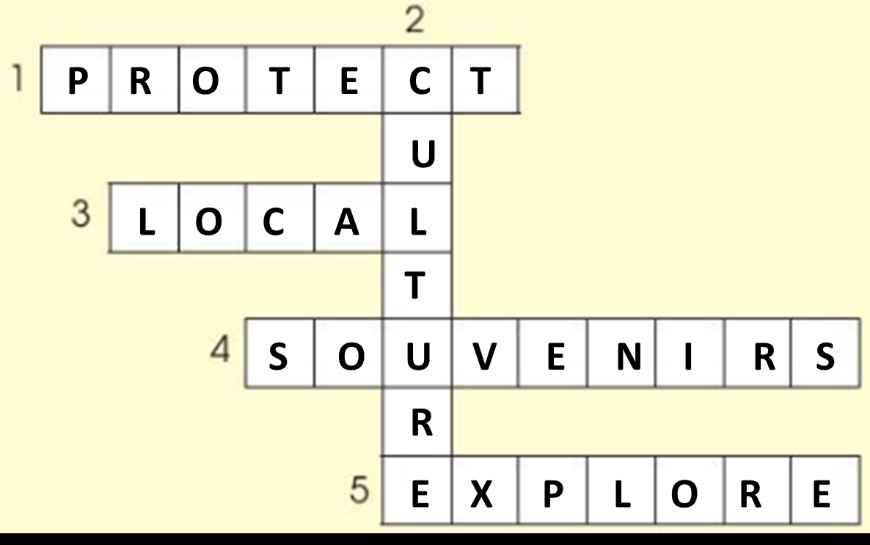Hãy nhập câu hỏi của bạn vào đây, nếu là tài khoản VIP, bạn sẽ được ưu tiên trả lời.

was very keen on = loved (yêu thích)
offered = gave (cho)
to earn money for = get paid for (kiếm tiền)
a disadvantage = The only problem (bất lợi)

The speakers’ original words are: My right ankle is hurting, but I don’t know why. I haven’t twisted it or anything, but I can’t put any weight on it. I watched a really good video clip on the internet yesterday. I’ll send you a link to the website where I found it. you must watch it.
(Lời gốc là: Mắt cá chân phải của mình bị đau, nhưng mình không biết tại sao, mình không vặn nó hay làm gì, nhưng mình cũng không đứng dậy được. Em có xem một cái clip hay trên mạng hôm qua. Em sẽ gửi link cho chị trang web mà em tìm ra nó. Chị phải coi đấy.)


1. Hilary said that she didn’t like the taste of coffee, so she couldn’t drink a lot.
(Hilary nói rằng cô ấy không thích mùi vị của cà phê, vì vậy cô ấy không thể uống nhiều.)
2. Kevin first saw baby turtle at a turtle sanctuary.
(Lần đầu tiên Kevin nhìn thấy rùa con tại khu bảo tồn rùa.)
3. Kevin saw loads of multicolored fish but he didn’t catch them.
(Kevin nhìn thấy vô số cá nhiều màu nhưng anh không bắt.)
4. Terry lost in the jungle because he chased a monkey which ran away with his sunglasses.
(Terry đã bị lạc trong rừng vì anh ta đuổi theo một con khỉ, nó đã bỏ chạy cùng chiếc kính râm của anh ta.)

When you do a task with gapped sentences in a narrative text, look carefully at the sentence before each gap and think about what is likely to happen next. Then look at the options and see which of the sentences matches your ideas. Finally, check that the text reads smoothly with your chosen sentence in place.
(Khi bạn làm bài điền câu vào chỗ trống trong một bài văn tự sự, cẩn thận nhìn vào câu trước của mỗi chỗ trống và suy nghĩ xem điều gì sẽ xảy ra tiếp theo.)

a. the toughest
b. the biggest
c. the most powerful; the most difficult
d. the worst
e. one of the biggest tsunamis
f. the most powerful (earthquake ever) in Japan; the (fifth) most powerful in the world
a: the toughest
b: the biggest
c: the most powerful, the most difficult
d: the worst
e: one of the biggest tsunamis
f:. the most powerful (earthquake ever) in Japan; the (fifth) most powerful in the world

1. Question 5 is about the whole text.
(Câu 5 là hỏi về cả bài.)
Question 1 - Newspapers often express the same opinion.
(Câu 1 - Các tờ báo đều thể hiện quan điểm chung như vậy.)
Question 2 - Combat games, for example, teach players to think in three dimensions.
(Câu 2 - Ví dụ, trò chơi đối kháng, dạy người chơi cách suy nghĩ ở không gian 3 chiều.)
Question 3 - In 2013, research showed that children who play role-playing games get better grades at school than those who don't play them.
(Câu 3 - Vào năm 2013, nghiên cứu cho thấy những trẻ em chơi các trò chơi nhập vai đạt điểm số tốt hơn những trẻ khôn chơi.)
Question 4 - The report also says that video games teach children how to react well to failure because players continually fail and try again.
(Câu 4 - Báo cáo cũng nói rằng trò chơi điện tử dạy trẻ em cách phản ứng với thất bại vì người chơi liên tục tua và thử lại.)



loyal - synonym: faithful (từ đồng nghĩa: trung thành)
- antonym: disloyal (từ trái nghĩa: không trung thành)